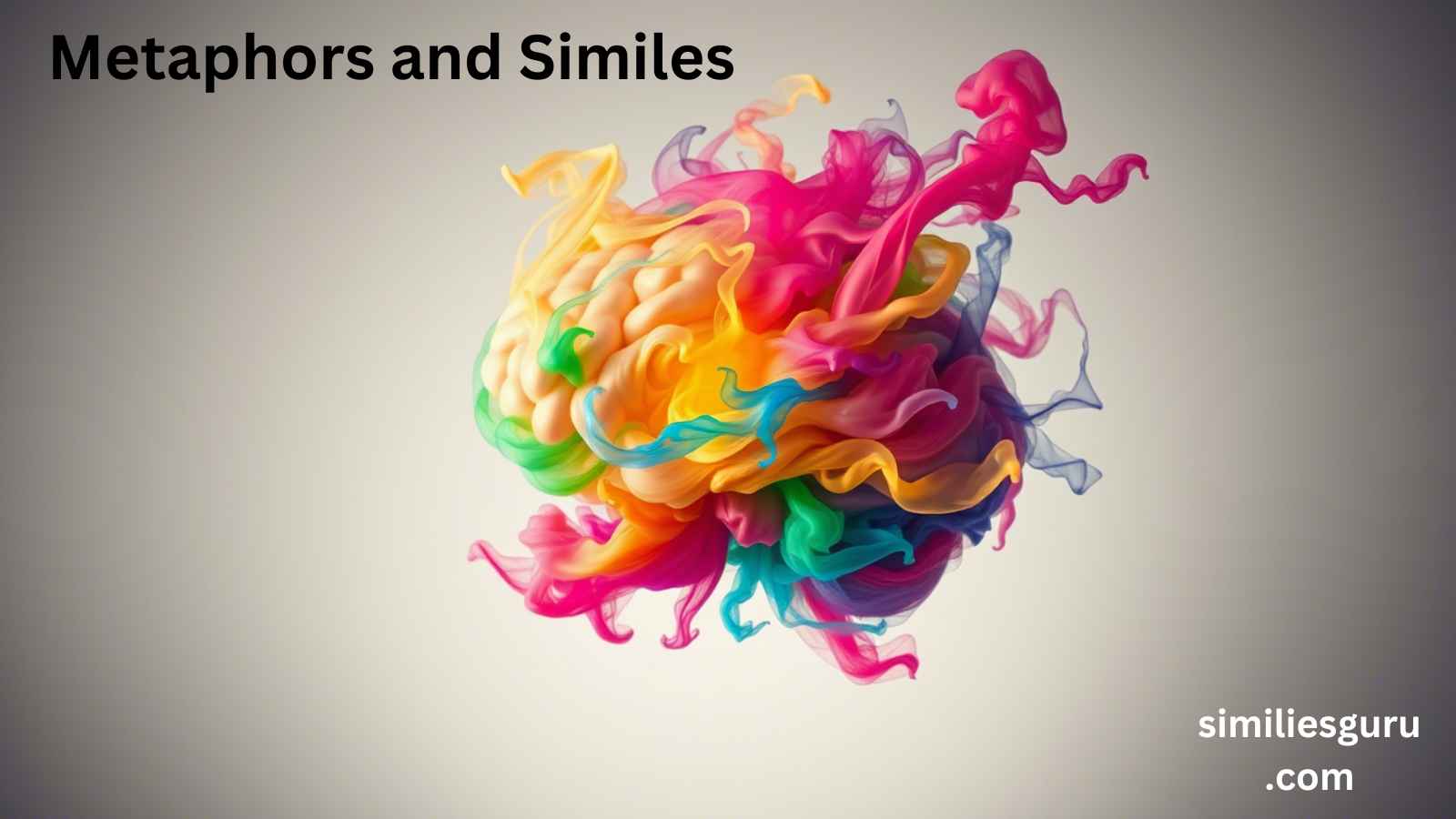Teaching middle school students the art of figurative language can feel like opening a treasure chest of imagination. Metaphors and similes, in particular, are powerful tools that help young learners paint vivid pictures with words, transforming their writing into a colorful tapestry of expression. However, finding engaging, effective, and varied worksheets to teach these concepts can sometimes seem like searching for a needle in a haystack. This article explores over 20 creative metaphors and similes worksheets tailored for middle school classrooms. Beyond simply listing resources, we’ll dive into polite, professional, and casual alternatives to the phrase “metaphors and similes worksheets for middle school,” offering a variety of ways to frame this educational tool depending on context and tone. Whether you’re a teacher crafting a formal lesson plan or a parent casually encouraging creativity at home, this guide provides examples, nuances, and practical tips to choose the best phrasing for any situation.
Why Metaphors and Similes Matter in Middle School
Before we explore the worksheets and their alternatives, let’s consider why metaphors and similes are as essential as oxygen to a growing writer. These figures of speech allow students to compare ideas in fresh, unexpected ways—like a bridge connecting the concrete to the abstract. For middle schoolers, who are often navigating a whirlwind of emotions and ideas, metaphors and similes provide a playground for self-expression. Worksheets designed to teach these concepts can act like a compass, guiding students through the wilderness of language with structure and purpose.
Understanding the Phrase: “Metaphors and Similes Worksheets for Middle School”
The phrase “metaphors and similes worksheets for middle school” is straightforward, like a clear stream running through a forest. It tells us exactly what’s on offer: printable or digital activities focused on figurative language, aimed at students typically aged 11–14. However, this phrasing might not always suit every audience or context. A principal might prefer a more formal tone when discussing curriculum tools, while a student might respond better to something playful. Below, we’ll explore over 20 alternative ways to express this idea, grouped by tone—polite, professional, and casual—along with worksheets that bring these concepts to life.
Polite Alternatives and Worksheets
Polite phrasing is like a warm handshake—it’s respectful, considerate, and welcoming. These alternatives are ideal for addressing parents, colleagues, or students in a courteous manner.
- “Activities to Explore Metaphors and Similes for Young Learners”
- Worksheet Idea: “Comparison Garden” – Students draw a garden where each flower represents a simile (e.g., “as bright as the sun”) and each tree a metaphor (e.g., “hope is a sturdy oak”).
- Nuance: Gentle and inviting, perfect for parent-teacher meetings.
- “Kindly Crafted Figurative Language Exercises for Middle Schoolers”
- Worksheet Idea: “Polite Pairs” – Students match polite similes (e.g., “as sweet as a kind word”) with metaphors (e.g., “kindness is a soft breeze”).
- Nuance: Subtle and refined, suited for formal emails.
- “Gracious Guides to Figurative Speech for Grades 6–8”
- Worksheet Idea: “Thankful Thoughts” – Students write metaphors and similes inspired by gratitude (e.g., “gratitude is a warm blanket”).
- Nuance: Warm and appreciative, great for newsletters.
- “Thoughtful Tasks for Teaching Metaphors and Similes”
- Worksheet Idea: “Mindful Moments” – Students create similes and metaphors based on peaceful scenes (e.g., “calm as a still lake”).
- Nuance: Reflective and considerate, ideal for one-on-one tutoring.
Professional Alternatives and Worksheets
Professional phrasing is like a well-tailored suit—crisp, authoritative, and purposeful. These options work well in educational settings like staff meetings, lesson plans, or academic discussions.
- “Structured Figurative Language Resources for Middle School Education”
- Worksheet Idea: “Language Blueprint” – Students design a “building” using metaphors (foundation) and similes (windows).
- Nuance: Precise and organized, perfect for curriculum outlines.
- “Comprehensive Metaphor and Simile Practice for Grades 6–8”
- Worksheet Idea: “Word Architect” – Students construct sentences with given metaphor and simile “tools.”
- Nuance: Detailed and thorough, suited for professional development.
- “Educational Tools for Mastering Metaphors and Similes”
- Worksheet Idea: “Skill Builder” – A step-by-step guide where students identify, analyze, and create figurative language.
- Nuance: Goal-oriented, ideal for teacher evaluations.
- “Targeted Activities for Figurative Language Proficiency”
- Worksheet Idea: “Precision Practice” – Students refine vague sentences into sharp metaphors and similes.
- Nuance: Focused and results-driven, great for academic reports.
- “Curriculum-Aligned Figurative Speech Exercises”
- Worksheet Idea: “Standards Match” – Aligns metaphors and similes with Common Core goals, with examples like “courage is a lion’s roar.”
- Nuance: Official and standards-based, perfect for school boards.
Casual Alternatives and Worksheets
Casual phrasing is like a comfy pair of sneakers—relaxed, approachable, and fun. These are great for engaging students directly or chatting with peers informally.
- “Cool Metaphor and Simile Stuff for Middle School Kids”
- Worksheet Idea: “Rad Comparisons” – Students write similes and metaphors inspired by pop culture (e.g., “fast as a superhero”).
- Nuance: Playful and trendy, ideal for classroom icebreakers.
- “Fun Figurative Language Sheets for Tweens”
- Worksheet Idea: “Emoji Expressions” – Students pair emojis with metaphors and similes (e.g., “happy as a 😊”).
- Nuance: Lighthearted and youthful, great for student handouts.
- “Chill Ways to Learn Metaphors and Similes”
- Worksheet Idea: “Vibe Check” – Students describe moods with figurative language (e.g., “anger is a storm cloud”).
- Nuance: Relaxed and relatable, perfect for small groups.
- “Awesome Practice Pages for Figurative Fun”
- Worksheet Idea: “Game On” – A board game-style sheet where students roll dice to create metaphors or similes.
- Nuance: Energetic and engaging, suited for after-school programs.
- “Easy-Peasy Metaphor and Simile Workouts”
- Worksheet Idea: “Quick Hits” – Short, timed challenges to brainstorm similes and metaphors.
- Nuance: Simple and breezy, great for homework.
Mixed-Tone Alternatives and Worksheets
Sometimes, you need a blend of tones—like a smoothie mixing sweet and tangy flavors. These options adapt to various audiences while keeping things fresh.
- “Helpful Figurative Language Resources for Middle School Success”
- Worksheet Idea: “Success Steps” – A ladder graphic where each rung is a new metaphor or simile.
- Nuance: Supportive yet structured, good for parent guides.
- “Creative Tasks to Boost Metaphor and Simile Skills”
- Worksheet Idea: “Imagination Station” – Students write a short story using at least five similes and metaphors.
- Nuance: Encouraging and dynamic, ideal for creative writing units.
- “Handy Practice for Figurative Language Fun”
- Worksheet Idea: “Toolbox” – Students fill a “toolbox” with simile and metaphor “tools” for writing.
- Nuance: Practical and friendly, suited for mixed classrooms.
- “Engaging Exercises to Spark Figurative Thinking”
- Worksheet Idea: “Spark It Up” – Students draw a lightbulb and fill it with bright simile/metaphor ideas.
- Nuance: Inspirational and accessible, great for diverse learners.
- “Smart Sheets for Metaphor and Simile Mastery”
- Worksheet Idea: “Brain Boost” – A puzzle where students decode metaphors and similes.
- Nuance: Clever and motivating, perfect for advanced students.
- “Dynamic Figurative Language Activities for Young Writers”
- Worksheet Idea: “Writer’s Wave” – Students “ride” a wave of creativity, adding similes and metaphors.
- Nuance: Vibrant and versatile, ideal for group projects.
- “Interactive Tools for Exploring Metaphors and Similes”
- Worksheet Idea: “Mix and Match” – Cut-out cards for students to pair similes and metaphors.
- Nuance: Hands-on and collaborative, great for kinesthetic learners.
Choosing the Best Alternative: Context and Tone
Selecting the right phrasing is like picking the perfect key for a melody—it depends on the situation. Here’s how to decide:
- Formal Contexts (e.g., emails to administrators): Opt for professional alternatives like “Comprehensive Metaphor and Simile Practice for Grades 6–8.” These convey expertise and align with educational goals.
- Polite Settings (e.g., parent communication): Use gentle options like “Thoughtful Tasks for Teaching Metaphors and Similes” to build trust and warmth.
- Casual Moments (e.g., student interaction): Go with fun choices like “Cool Metaphor and Simile Stuff for Middle School Kids” to spark enthusiasm.
- Mixed Audiences (e.g., workshops): Blend tones with “Creative Tasks to Boost Metaphor and Simile Skills” for broad appeal.
The worksheets themselves should match the tone. A “Rad Comparisons” sheet won’t fit a formal report, just as “Standards Match” might feel stiff in a casual setting.
9 Texting Examples for User-Friendly Engagement
To make this article shine online, here are nine texting-style examples that are concise, relatable, and optimized for readability. These could be shared in class or posted on educational platforms.
- “Hey, need a simile boost? Try ‘fast as a cheetah’ on this worksheet!”
- “Metaphors made easy—‘life is a journey’ starts your next assignment!”
- “Grab this fun sheet: write ‘cool as ice’ and more similes!”
- “Txt your fave metaphor—mine’s ‘hope is a sunrise’—for this activity!”
- “Quick challenge: simile or metaphor? ‘Strong as steel’—check the worksheet!”
- “Yo, ‘anger is a volcano’—add yours to this figurative language page!”
- “Worksheet time! ‘Happy as a puppy’—what’s your simile?”
- “Let’s roll: ‘time is a river’—flow into this metaphor practice!”
- “Got 5 mins? ‘Bright as a star’—fill out this simile sheet!”
These examples are short, punchy, and student-friendly, making them perfect for digital sharing or classroom warm-ups.
Expanding the Worksheet Experience
To take these worksheets beyond the page, consider adding interactive twists—like a breeze turning a gentle wind into a gust. Pair “Emoji Expressions” with a digital app where students upload their creations. Turn “Game On” into a classroom competition with teams racing to craft the best metaphors. For “Imagination Station,” encourage students to record their stories as podcasts. These extensions make learning as dynamic as a river carving new paths.
Conclusion
Metaphors and similes are like spices in a writer’s kitchen—essential for flavor and flair. The 20+ worksheets and alternative phrasings in this article offer a buffet of options for middle school educators, parents, and students. Whether you need a polite nod to parents, a professional pitch for a lesson plan, or a casual hook for tweens, there’s a phrase and activity to match. By tuning into context and tone, you can select the perfect tool to inspire young minds, helping them see language as a canvas rather than a chore. So, grab a worksheet, tweak the wording to suit your audience, and watch creativity bloom like a spring garden.



